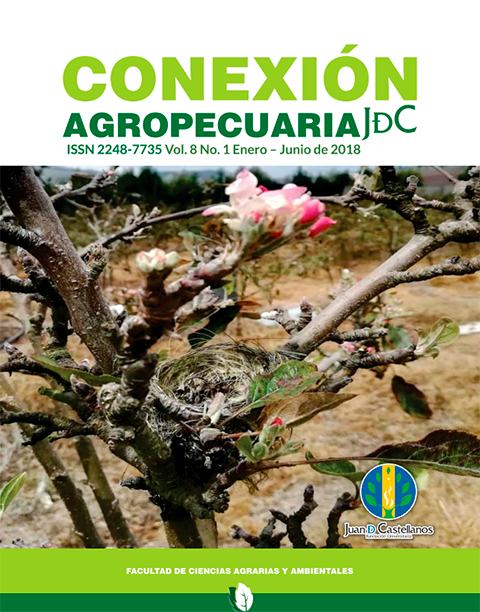Nutrition in puppies with sarcoptic mange, case study in a dobermann pinscher dog
DOI:
https://doi.org/10.38017/22487735.618Keywords:
sarcoptic mange, immunosuppression, exposure, nutrition, puppiesAbstract
Sarcoptic mange is a dermatological disease of zoonotic character, caused by the mite of the sarcoptes family, scabiei var canis species; it is very common in case of small animals. In puppies that have been exposed to digestive pathologies, there is an immunosuppression that predisposes to skin problems due to the loss of precursors that present mitotic action of circulating leukocytes and lymphatic cells. It also presents the destruction of lymphoid tissues of the mucosa and generates food hypersensitivity and intestinal inflammation, the contribution of diets rich in amino acids decreases oxidative stress and the immunological gap that occurs in the transition of weaning. We describe a clinical case assisted at the Pet Center veterinary clinic in Tunja in April 2016 of a 3-month-old dobermann pinscher with a history of digestive disease of 15 days of evolution presumably parvovirus and diagnosed with sarcoptic mange, it is carried out an improvement of the diet with emphasis on a nutritional element of better quality and the addition of trace elements and vitamin C and E. It results in a total cure of digestive disorders, better weight gain, increased muscle mass, better hair condition and total elimination of the sarcoptic mange. What proves the importance of improving animal welfare by ensuring adequate maintenance of their conditions.
Author Biography
Lady Gehovel Caro Mejía, Fundación Universitaria Juan de Castellanos
MVZ y Especialista en medicina Interna de Pequeños, Universidad Pedagógica y Tecnológica de Colombia.
Docente, Facultad de Ciencias agrarias, Fundación Universitaria Juan de Castellanos.
References
Ávila, J.A., y Castaño, D.A. (2012). Nutrición parenteral en pequeños animales. Revisión de algunos aspectos importantes. Revista Medicina Veterinaria y de Zootecnia, 58(1), 56-67.
Biourge, V. C., y Fontaine, J. (2004). Exocrine pancreatic insufficiency and adverse reaction to food in dogs: a positive response to a high-fat, soy isolate hydrolysate–based diet. The Journal of nutrition, 134(8), 2166S-2168S. Recovered from https://doi.org/10.1093/jn/134.8.2166S.
Castrillón Rivera, L. E., Palma Ramos, A., y Padilla Desgarennes, C. (2007). Péptidos antimicrobianos: antibióticos naturales de la piel. Dermatología Revista Mexicana, 51(2), 57-67. Recuperado de https://www.medigraphic.com/pdfs/derrevmex/rmd-2007/rmd072d.pdf.
Castrillón, L., Palma, A., y Padilla, C. (2008). La función inmunológica de la piel. Dermatología Revista Mexicana, 52(5), 211-224. Recuperado de https://www.medigraphic.com/cgi-bin/new/resumen.cgi?IDARTICULO=27348.
Court, A. (1991). Aspectos nutricionales en dermatología de especies menores. Monografías de Medicina Veterinaria, 13(1). Recuperado de https://web.uchile.cl/vignette/monografiasveterinaria/monografiasveterinaria.uchile.cl/CDA/mon_vet_completa/0,1421,SCID%253D18021%2526ISID%253D433,00.html.
Cruces Larrain, C. A. (2013). Descripción de perros con sarna sarcóptica atendidos en el centro de salud veterinaria el roble. (Trabajo de grado, Universidad de Chile). Recuperado de http://repositorio.uchile.cl/handle/2250/131530.
Curtis, C., y Paradis, M. (2008). Sarna Sarcóptica, cheyletielosis y trombiculosis. En Foster, A. y Foil, C. (Eds.) Manual de dermatología en pequeños animales y exóticos. Barcelona, España: Ediciones S. (pp. 205-209).
Day, M. J. 1999. Basic immunology. In Clinical Immunology of the dog and cat (pp. 9-46). London: Manson Publishing Ltda.
Ezeibe, M., Innocent, N., Ada, N. N., Okorafor, O. & James, I. E. (2010). Aluminium - magnesium silicate inhibits parvovirus and cures infected dogs, Health 2(10), 1215-1217. Doi: 10.4236/health.2010.210179.
Ettinger, J. S., y Feldman, C. E. (2007). Tratado de Medicina Interna Veterinaria. Madrid, Espeña: S.A Elsevier España.
Gallo, R. L., y Nakatsuji, T. (2011). Microbial symbiosis with the innate immune defense system of the skin. The Journal Investigative Dermatology, 131(10), 1974-1980. Doi: 10.1038/jid.2011.182.
Giordano, A. L., y Aprea, A. N. (2003). Sarna Sarcóptica (Escabiosis) en caninos: actualidad de una antigua enfermedad. Analecta Veterinaria, 23(1), 42-46. Recuperado de http://sedici.unlp.edu.ar/bitstream/handle/10915/11154/Documento_completo.pdf?sequence=1&isAllowed=y.
Greene, C. E. (2008). Enfermedades infecciosas del perro y el gato. Vol. 2, 3a. Ed. Buenos Aires: Intermedica.
Guerin, M., Huntley, M.E., y Olaizola, M. (2003). Haematococcus astaxanthin: applications for human health and nutrition. Trends in Biotechnology, 21(5), 210-216.
Journal of The American Animal Hospital Association. (2010). Guías para la Evaluación Nutricional de perros y gatos de la Asociación Americana Hospitalaria de Animales (AAHA). American Animal Hospital Association, 46(4).
López Roldán, P. (2012). Efecto del consumo de astaxantina en la salud. Revista Española de Nutrición Comunitaria. 18(3), 164-177.
Minakshi, S., & Prasad, G. (2008). Rapid, sensitive and cost effective method for isolation of viral DNA from feacal samples of dogs. Veterinary world, 3(3), 105-106.
Pashkow, F. J., Watumull, D. G., & Campbell, C. L. (2008). Astaxanthin: a novel potential treatment for oxidative stress and inflammation in cardiovascular disease. The American Journal of Cardiology, 101(10A), 58D-68D. Doi: 10.1016/j.amjcard.2008.02.010.
Prelaud, P., y Harvey, R. (1999). Dermatología Canina y nutrición Clínica. En Enciclopedia de la Nutrición Clínica Canina. Royal Canin. Recuperado de http://www.ivis.org/advances/rc_es/A4302.1207.ES.pdf?LA=2.
Prelaud, P. (2004). Diagnostic Clinique des dermatites allergiques du chien. Revue de Médecine Vétérinaire, 155(1), 12-19.
Quiroz, R. H. (1989). Parasitología y Enfermedades Parasitarias de Animales Domésticos. 2a ed. Buenos Aires, Argentina: Limusa.
Ramadinha, R. (2013). Cadernos Técnicos en Veterinária e Zootecnia. Dermatologia en cães e gatos, (71) [Fotografía]. Recuperado de https://issuu.com/escoladeveterinariaufmg/docs/caderno_tecnico_71_dermatologia_cae.
Rejas López, J. Goicoa Valdevira, A., Payo Puente, P., Balazs Mayanz, V. y Rodrigues Faustino, A. (1997). Manual de dermatología de animales de compañía. Universidad de León, Secretariado de Publicaciones. Recuperado de https://sites.google.com/site/manualdedermatologia/.
Schaer, M. (2006). Medicina clínica del perro y el gato. Barcelona: Masson.
Scott, W., Miller, W. y Griffin, C. (2001). Parasitic skin diseases. En: Muller and Kirk's Small Animal Dermatology. 6th ed. Philadelphia: Saunders.
Scott, W. y Miller, W. (2004). Dermatología equina. Buenos Aires, Argentina: Inter-médica.
Sosa da Silva, K. A. (2009). Estudio de la diversidad del Parvovirus canino tipo 2 (CPV-2) mediante el análisis de repetidos en el genoma viral. (Trabajo de grado, Universidad de la República Montevideo). Recuperado de http://www.sidalc.net/cgi-bin/wxis.exe/?IsisScript=FCT.xis&method=post&formato=2&cantidad=1&expresion=mfn=001833.
Soulsby, L. J. E. (1988). Parasitología y Enfermedades Parasitarias en los Animales Domésticos. 7a ed. México, D.F: Nueva Editorial Interamericana.
Vaden, S. L., et al. (2000). Food hypersensitivity reactions in Soft Coated Wheaten Terriers with protein‐losing enteropathy or protein‐losing nephropathy or both: gastroscopic food sensitivity testing, dietary provocation, and fecal immunoglobulin E. Journal of Veterinary Internal Medicine, 14(1), 60-67. Doi: 10.1892/0891-6640(2000)014<0060:fhrisc>2.3.co;2.
Villanueva Pájaro, D. J., y Marrugo Cano, J. A. (2015). Influencia de los ácidos grasos poliinsaturados omega-3 y omega-6 de la dieta y de sus metabolitos en la respuesta inmune de tipo alérgico. Revista de la Facultad de Medicina, 63(2), 301-313. Doi: http://dx.doi.org/10.15446/revfacmed.v63n2.48055.
Wijga, A. H., et al. (2006). Breast milk fatty acids and allergic disease in preschool children: the Prevention and Incidence of Asthma and Mite Allergy birth cohort study. The Journal of Allergy Clinical Immunolgy, 117(2), 440-7. Doi: 10.1016/j.jaci.2005.10.022.
Wiberg, M. E., Lautala, H. M., & Westermarck, E. 1998. Response to long-term enzyme replacement treatment in dogs with exocrine pancreatic insufficiency. Journal of the American Veterinary Medical Association, 213(1), 86-90. Recovered from https://www.ncbi.nlm.nih.gov/pubmed/9656030.




